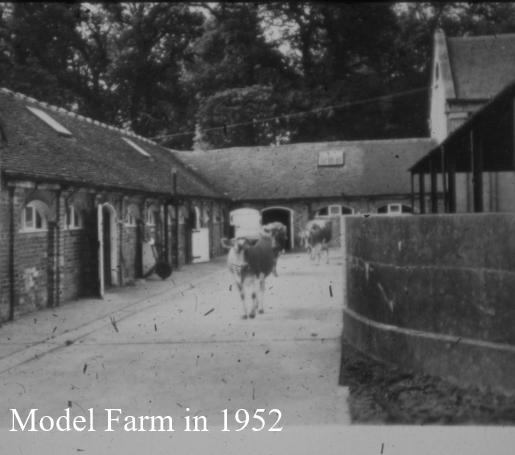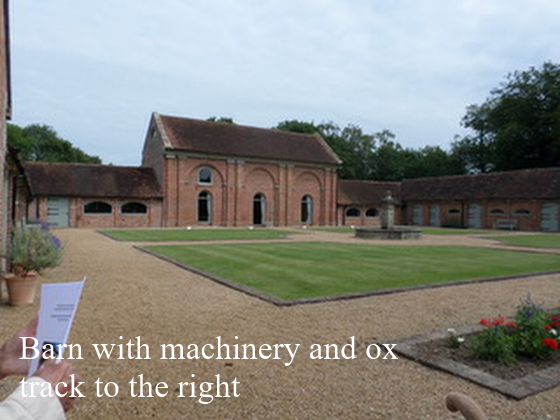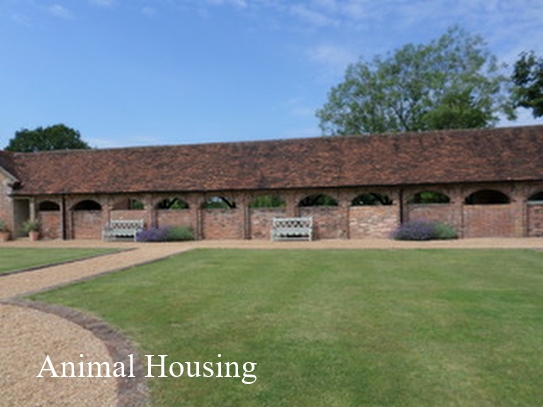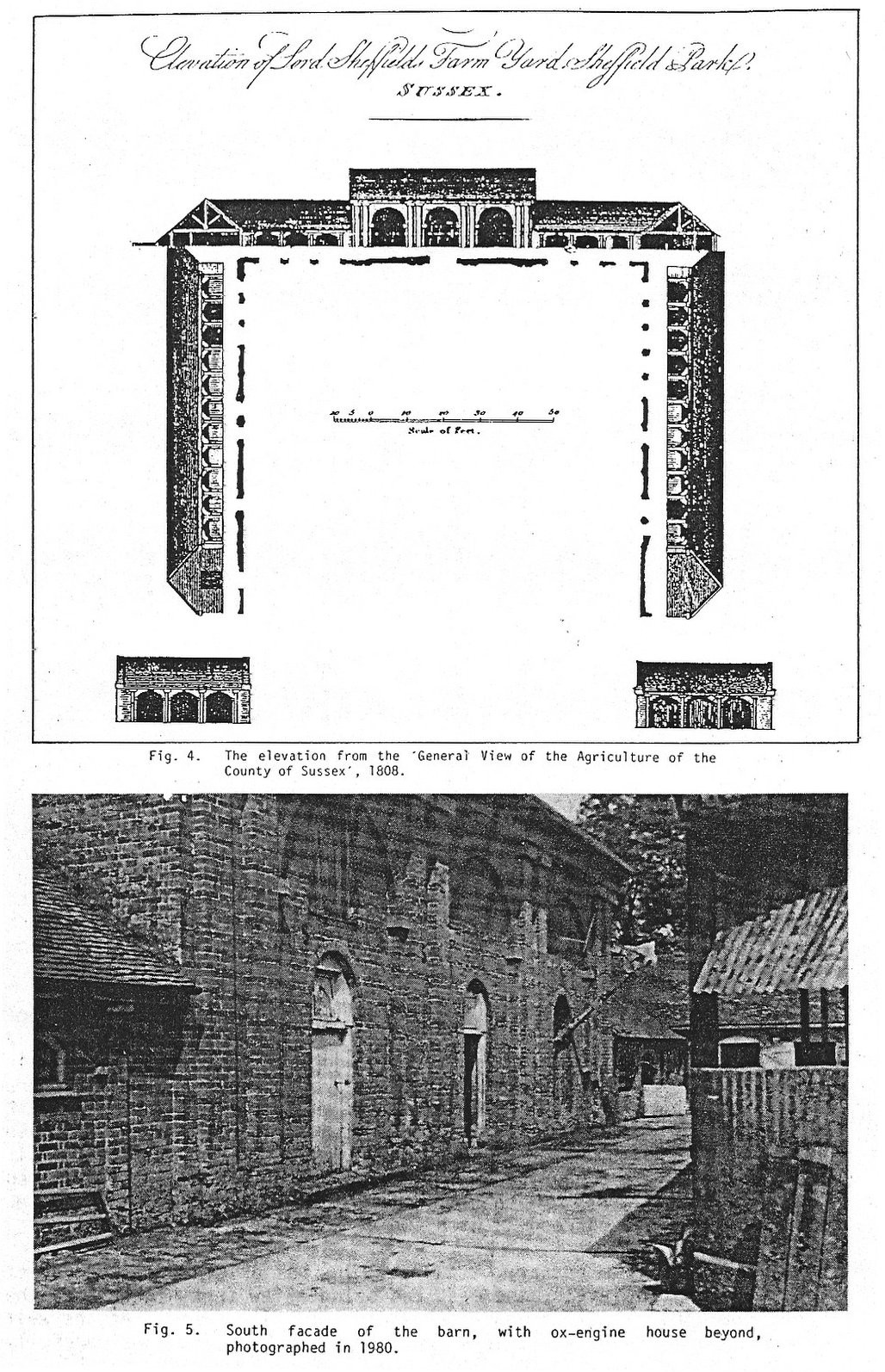|
Back Home
Lord Sheffield’s Model Farm During the eighteenth century British farming was progressive with rising production. This was probably because of the start of specialisation in farming (which still continues to this day). This was facilitated by the improvement in communications allowing produce to be dispersed over longer distances from the farm. For larger establishments there was an interest in better farm buildings and landowners began to develop their own home farms. By the early 1800s books of designs for farms were generally available. The commonest design was a rectangular layout and the buildings were sometimes quite grand tilting at Gothic or Neo-Classical design. The first Lord Sheffield was a well-known cattle and sheep breeder, with particular interest in Merino and Southdown sheep. He was also keen to advance his position at the Board of Agricultue where he became chairman. His model farm was built 1806/7 and consisted of six courts and a barn with Doric columns survives. There was a threshing machine powered by oxen on an ox-track, which would have been welcomed as hand threshing is very heavy work. The barn also had a corn grinder, a straw cutter and a granary above. There were four water cisterns fed by a pump and drainage to a cesspit, three dung pits a slaughterhouse and a steaming house and cistern for hogwash. There was also the usual accommodation for cattle, horses, hogs, dogs, a calf pen, a bull stall, a wagon store and storage for animal feed and a hexagonal corn store. Passages were included to facilitate the feeding of stock around the site and there was a poultry yard close to the farmhouse. The ergonomic improvements of this design over most farms at that time must have been considerable. Theuse of brick rather than timber construction was also innovative The farm extended to 1400 acres and had a flock of 1000 sheep. The farm continued until the miid twentieth century. A testament to its advanced design. Today the farm buildings have been converted to a most unusual, listing dwelling. The Society Archive holds much more detailed information in an exhaustive article by Kay Coutain |




